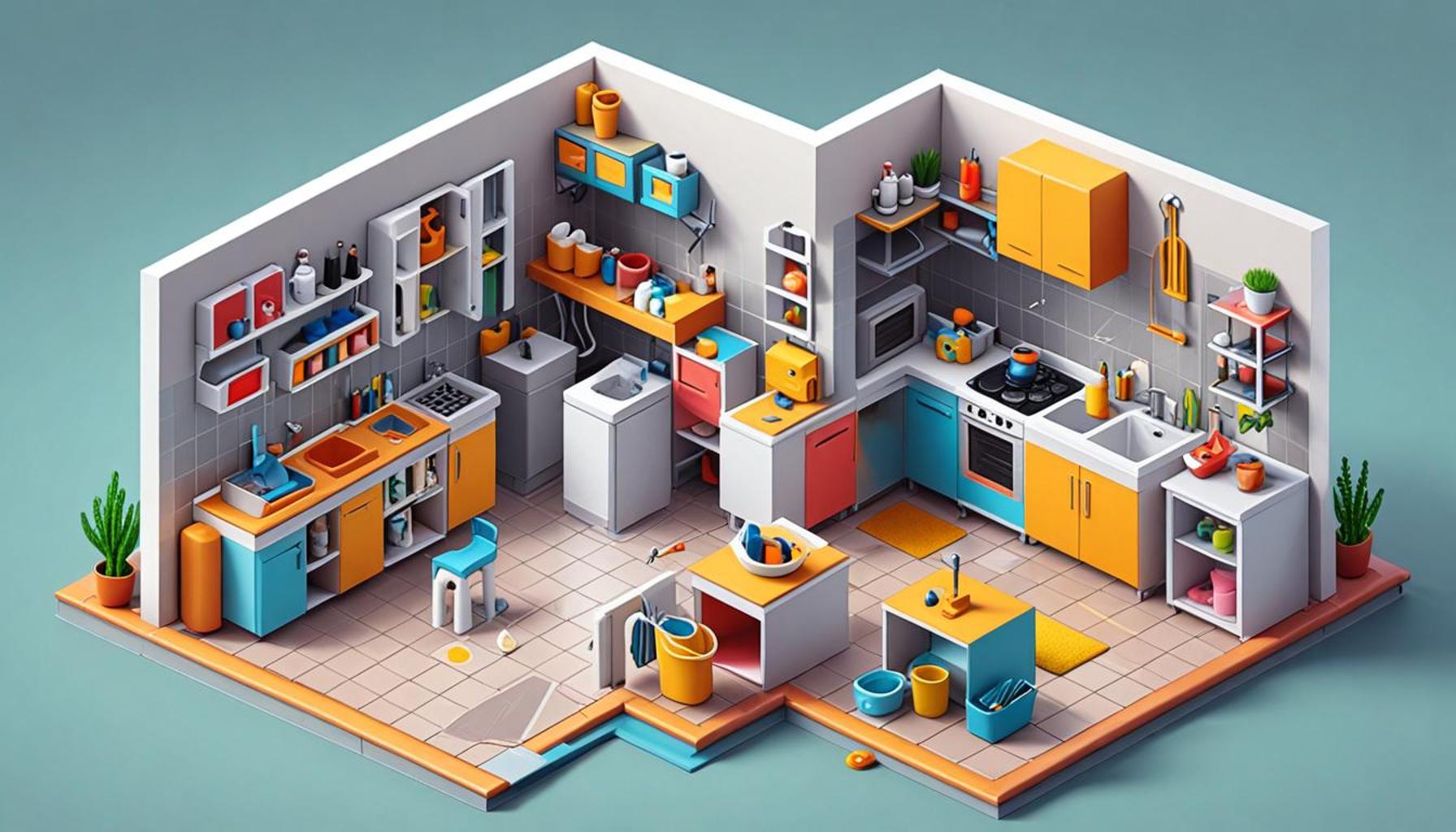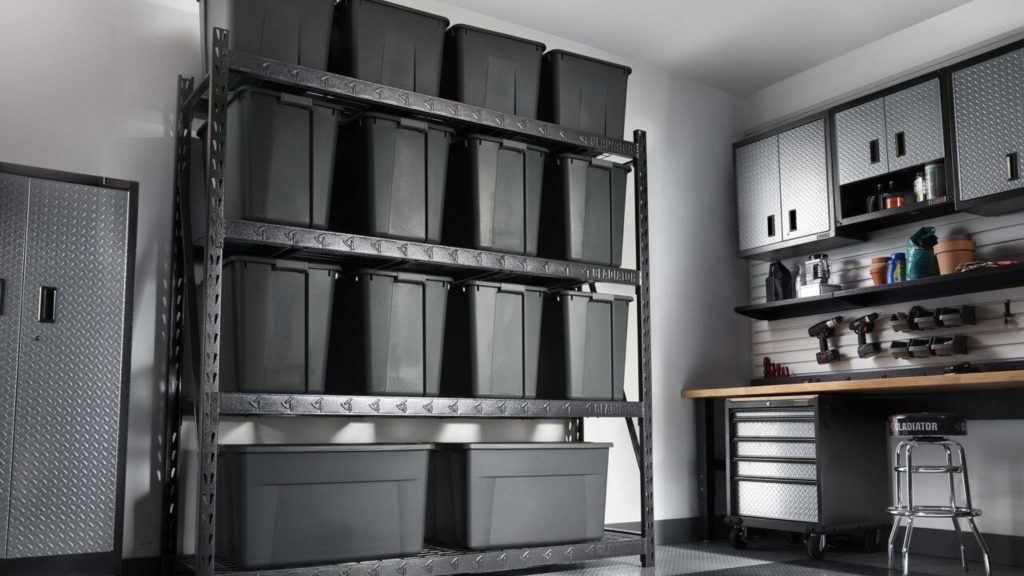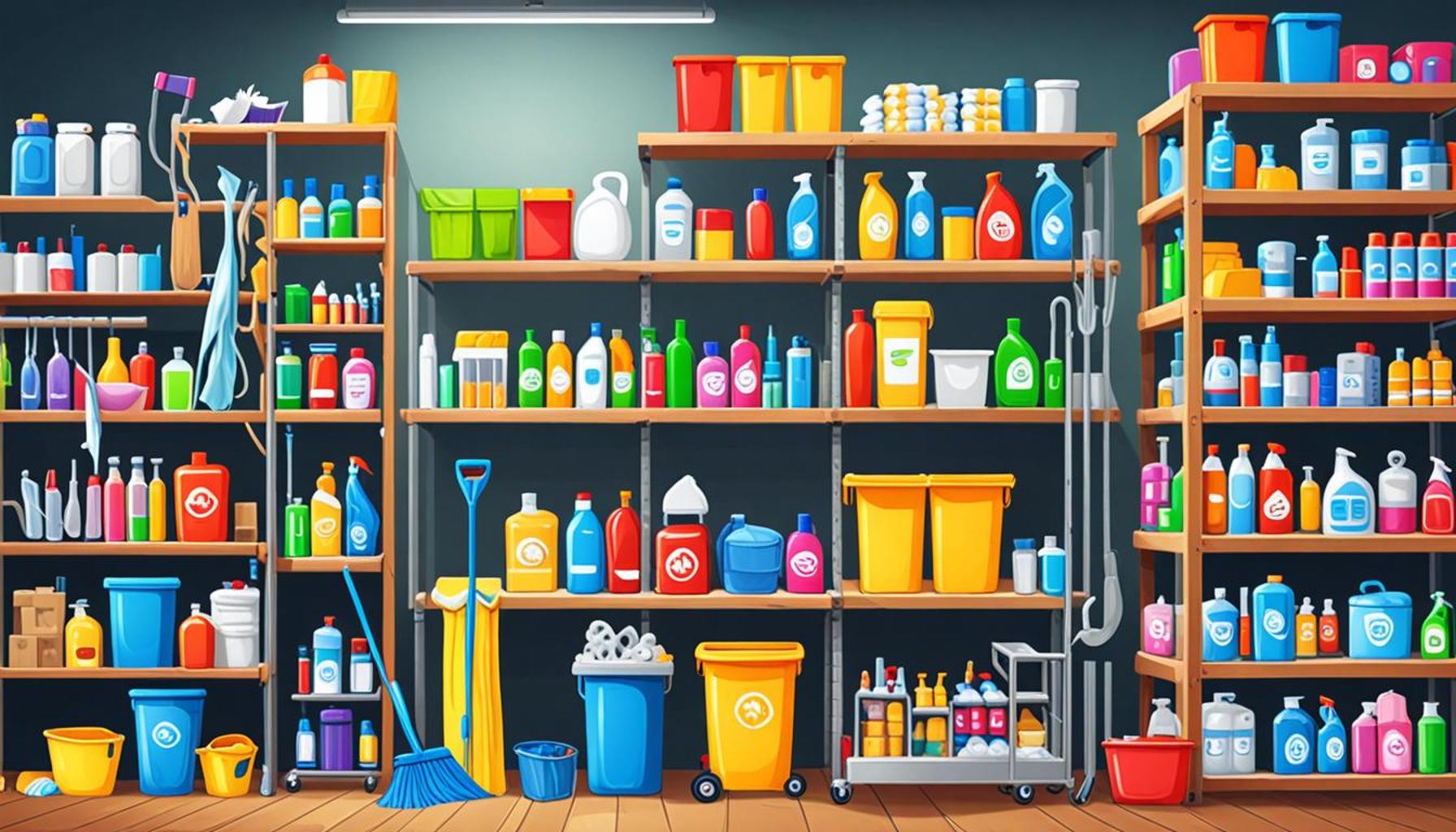Designing a Modular Cleaning System to Adapt to Changing Household Needs

Understanding Household Cleaning Dynamics
In the modern American household, the demands of everyday life can create significant challenges when it comes to maintaining a clean living space. As families juggle jobs, school schedules, and social commitments, traditional cleaning routines often fall by the wayside. Thus, the need for a flexible cleaning solution that can seamlessly integrate into these busy lifestyles becomes increasingly important.
An ideal approach to meeting these changing demands is through a modular cleaning system. This innovative concept allows for a personalized cleaning experience that adjusts according to specific tasks and individual family needs.
Benefits of a Modular System
- Customization: Imagine having the ability to tailor your cleaning tools based on the exact situation at hand. For example, a family might require extra attachments for vacuuming pet hair on carpets or specialized mops for tile floors. This level of customization ensures that every cleaning task is handled with precision.
- Scalability: Life is full of changes, and so are our cleaning needs. A modular system allows families to easily add or remove components, making it suitable for a growing number of children or adapted for when children leave home. This flexibility ensures that the cleaning solution evolves alongside the family’s dynamic.
- Convenience: In a hurried world, efficiency is key. A modular cleaning system consolidates various tools into one convenient setup. For instance, an all-in-one device that adapts from a vacuum to a carpet cleaner can significantly cut the time spent on chores, leaving more room for family activities.
A well-designed modular cleaning system not only meets the current household expectations but also anticipates future cleaning trends. For instance, as sustainability becomes a rising concern, cleaning solutions may incorporate eco-friendly materials and energy-efficient designs—an important consideration for environmentally-conscious families.
Once you step into the world of modular cleaning, you discover a variety of products featuring specialized attachments and ergonomic handles that can dramatically enhance the cleaning experience. This adaptability not only promotes efficiency but also encourages a more enjoyable attitude towards domestic chores, transforming cleaning from a daunting task into a manageable part of daily life.
In this article, we will delve deeper into how to create a modular cleaning system that is both versatile and capable of growing with the evolution of your home. Through innovative design and strategic choices, the right system can significantly lessen the burden of household cleaning, making it a seamless element of your daily routine rather than an overwhelming obligation.

DISCOVER MORE: Click here to find out how eco-friendly cleaning products can improve your home
Key Components of a Modular Cleaning System
To truly understand how to design a modular cleaning system that adapts to the ever-changing needs of a household, it’s essential to dissect the core elements that make such a system effective and efficient. By focusing on versatility, functionality, and user-friendliness, a modular cleaning system can be tailored to meet the specific challenges faced by contemporary families.
Versatility in Design
The foundation of an effective modular cleaning system lies in its versatility. Each module must serve multiple purposes or be capable of easily switching functions. This could manifest in several ways:
- Interchangeable Attachments: A vacuum that can transform into a carpet cleaner with just a click or a mop that can also function as a dust collector can vastly streamline the cleaning process. Families can choose attachments based on their immediate needs, ensuring no task is left unattended.
- Multi-surface Compatibility: Whether dealing with hardwood floors, carpets, or tiles, a modular cleaning approach should accommodate all surfaces. Innovative materials can enhance cleaning effectiveness, allowing for a comprehensive approach to household maintenance.
- User-Centric Features: Designing for usability can include lightweight materials, ergonomic handles, and easy-to-maneuver frames. Such features not only improve the cleaning experience but also encourage frequent use, as family members are less likely to shy away from a cumbersome vacuum.
Functionality Meets Convenience
With the hustle and bustle of modern life, convenience is paramount. A modular cleaning system should be easy to assemble and disassemble, enabling quick transitions between different cleaning tasks. Consider the following aspects:
- Quick Assembly: In households where time is of the essence, users can benefit from designs that require no tools for setting up or taking apart various components. This ensures cleaning isn’t an arduous task—both in preparation and execution.
- Compact Storage: Modular systems must also include smart storage solutions that make it effortless to keep everything organized. Collapsible or stackable parts can save valuable space, especially in smaller homes where real estate is at a premium.
- Smart Technology Integration: Incorporating connectivity, such as apps that suggest cleaning schedules or alert users when batteries are low, can enhance the efficiency of a cleaning system. Understanding and managing household needs through an app can elevate the cleaning experience into the realm of smart home technology.
While the construction of a modular cleaning system is rooted in thoughtful design, the real success lies in its ability to adapt to the user’s lifestyle. By combining versatility, functionality, and convenience, this system not only addresses the immediate cleaning demands but also prepares households for the uncertainties of tomorrow. The advantages are obvious: an organized, efficient, and dynamic cleaning experience that resonates with families from all walks of life.
| Advantages | Details |
|---|---|
| Customizability | Allows users to tailor components according to their unique cleaning demands. |
| Adaptability | Can easily adjust to evolving household needs, from small apartments to large homes. |
The *modular cleaning system* stands out for its ability to transform cleaning routines. With *customizability*, homeowners can choose the specific components that fit their cleaning styles and environments, ensuring effectiveness in every corner of their space. When a family grows or their lifestyles change, the *adaptability* of this system proves invaluable, allowing for the addition or removal of modules without needing an entire overhaul.Additionally, this system can incorporate advanced technologies such as sensors that detect dust or high-traffic areas needing more attention. Eco-friendly options may also be included, appealing to environmentally conscious households. The synergy between practicality and innovation turns this system into not just a cleaning tool, but a *sustainable solution* for modern living, making it an enticing choice for those looking to enhance their home care while staying in line with changing dynamics.
DISCOVER MORE: Click here for an in-depth comparison
Future-Proofing Your Cleaning System
As the fabric of household dynamics continues to evolve, it’s essential for a modular cleaning system not only to cater to present needs but also to be adaptable for future challenges. This forward-thinking approach involves anticipating trends and integrating elements that foster longevity in design and usability.
Sustainable Materials and Eco-Friendliness
In today’s eco-conscious society, sustainability should be a cornerstone of any modern design. A modular cleaning system can benefit greatly from the use of renewable and recyclable materials, which not only reduce environmental impact but also appeal to consumers who prioritize eco-friendliness. Key aspects include:
- Biodegradable Components: Utilizing materials that can naturally break down without harming the environment ensures that the modular system aligns with contemporary consumer values. For instance, products made from plant-based plastics or recycled textiles can significantly reduce waste.
- Energy Efficiency: Incorporating energy-efficient technologies, such as battery-powered units with long-lasting batteries and low-energy modes, can aid in minimizing electricity consumption and extending operational life. This is particularly relevant in American households where energy costs continue to rise.
- Durability and Repairability: Designing cleaning modules that can withstand wear and tear ensures they remain functional over time, minimizing the need for replacements. Additionally, offering replacement parts can empower consumers to make repairs, thus promoting sustainability and extending the product’s life cycle.
Customizability for Personal Needs
Every household is unique, and a one-size-fits-all approach cannot serve everyone’s cleaning needs effectively. A customizable modular cleaning system must enable users to tailor components according to their specific lifestyle requirements:
- Personalized Cleaning Kits: Families can select individual modules based on the areas they target most—pets, children, or allergies. For instance, adding an air purifying feature or creating detachable, pet-hair-specific attachments can greatly enhance functionality.
- Expandable Modules: As families grow or change, so do their cleaning requirements. The system should allow users to easily add new modules or upgrade existing ones, ensuring that it can expand alongside the evolving needs of the household.
- Adaptation to Cleaning Challenges: Seasonal changes often bring unique cleaning demands. A modular system can include dedicated modules for tasks like spring cleaning or post-party clean-ups, which can easily be integrated for occasional use without taking up unnecessary space year-round.
These enhancements foster a relationship between the user and their cleaning system that deepens over time. Flexibility and adaptability not only mean reduced effort in maintaining cleanliness but also a sense of empowerment for users, as they can make informed choices about what their household requires.
The Role of AI and Automation
As we delve deeper into the technological future, incorporating AI-driven features into a modular cleaning system presents exciting possibilities. Intelligent algorithms can optimize cleaning schedules based on user behavior and preferences, allowing for:
- Predictive Cleaning Scheduling: Advanced systems could analyze household routines and suggest optimal cleaning times, ensuring tasks are done when they’re most convenient, thus enhancing overall efficiency.
- Real-time Monitoring: Smart sensors can monitor air quality, dust levels, and even grooming shed from pets, prompting an alert when it’s time to clean, effectively creating a proactive cleaning environment.
- Seamless Integration with Smart Home Devices: Allowing for compatibility with existing smart home ecosystems, users can engage in voice-activated cleaning commands, offering an elevated sense of convenience and control.
These innovations hold the potential to revolutionize how families manage cleanliness and organization, bringing forth a new era where technology and design work together in harmony. By embracing these aspects, a modular cleaning system can not just adapt to changing household needs but transcend them, poised to meet the demands of future generations.
DISCOVER MORE: Click here for essential tools
Conclusion: Embracing the Future of Cleaning
In an era where household needs are constantly shifting, the design of a modular cleaning system stands as a vital solution for modern families. By embracing sustainable materials and eco-friendly technologies, we align with an increasingly environmentally-conscious consumer base, ensuring that these systems resonate with their values. Furthermore, the ability to customize cleaning components means that households can curate solutions that fit their unique lifestyles, adapting to changes as families grow and evolve.
As we look to the future, integrating AI and automation into these cleaning systems will offer unprecedented convenience. Predictive cleaning schedules, real-time monitoring, and seamless compatibility with existing smart home technologies not only elevate user experience but also create a proactive cleaning environment that simplifies life.
Ultimately, the approach to designing a modular cleaning system should reflect a commitment to adaptability and innovation. By combining sustainability, customization, and advanced technology, we can equip modern households with the tools they need for efficient, effective cleaning. This forward-thinking strategy not only addresses current demands but also prepares us for the challenges of tomorrow—making every cleaning task an opportunity to enhance home life. Thus, investing in a modular cleaning system is not merely an enhancement; it is a vital step towards a smarter, more adaptable future.


